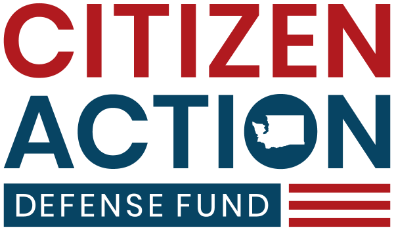
The “room where it happens” (not pictured).
NOTE: This is the first in a three-part series, ahead of the new year, that will shine a light—or several—on some of the more contentious political and policy fights ahead. Part I/III discusses impending legislative fights and some signs that voters are turning back to policy as the primary bases for choosing candidates.
Depending upon the “side” you chose on Election Day—though results from across the country reveal that ticket-splitting is becoming somewhat popular again—we at CADF would like to extend our deepest congratulations, condolences, or a mere tepid shrug for those who weren’t on board with anyone. We did it!! We made it through what had been the wildest national campaign in memory, and had all but promised to morph into a dangerous post-election hangover, with the once and future President Trump and some of his supporters calling the race rigged . . . until he won (fancy that!), and others on the left warning that Trump’s election would be the country’s last. Hey! Don’t threaten us with a good time!! But alas, it took journos across the country mere hours—if that—before 2028 entered into the national conversation. Are you exhausted yet? I doubt even Gitmo detainees forced to listen to the Barney theme song for days would trade it for the Morbius loop of unending political news to which we have all sentenced ourselves.
All of us here at CADF are focused on Washington State, which means we have the relative luxury of at least emotionally burying our heads in the proverbial sand with respect to national politics—which despite some signs of cloud-clearing, in general remains a partisan *&^%show. Or, who knows, maybe we have finally reached an inflection point. Washington, for its part, bucked a national move-to-center trend in favor of strengthening Democratic control of the levers of state power. Now, with a “fifth” Inslee term ahead, Republicans in Olympia have their work cut out for them—but so do Democrats.
At least mirroring the intensity of national politics (though with far less cross-aisle vitriol) Washington’s 69th legislative session is coming up, and state lawmakers are already gearing up for the battles ahead. If they wish to maintain their cool, calm, and collected demeanor, political and policy junkies—not exactly renowned for their stoicism—should prepare equally for the best and the worst, which of course depends where you land on any particular issue (unless you are still an ideologue).
Regardless of where you stand, the most important thing you can do is to study the more contentious policy fights that are likely to make it to the House and State Senate floors. That way, all of you Nervous Nellies (and even some Overconfident Olivers), are as prepared as you can be for the litany of pointless arguments you know you will soon be having with neighbors, colleagues, and fellow passengers (until the flight attendant reminds you that five miles above Walla Walla is no place to inveigh against pending legislation). But now that I have safely deplaned, here goes:
Despite the relative calm surrounding Election Day, there are certainly areas of impending contention in Olympia. And not, necessarily, along purely ideological grounds. Continued reform, for example, has its fans and detractors on both sides of the aisle, with one’s socioeconomic and generational statuses far more accurate predictors of their stance than, say, whether one voted for Reichert or Ferguson, Heck or Matthews, Kent or Glusenkamp Perez, and Herrera Beutler or Upthegrove (or, as discussed above, some seemingly unlikely combination thereof). Education also makes strange bedfellows, drawing Seattle progressives and Eastern farmers in a unified front against aging hippies in Port Angeles who, for some reason, detest parental decision making in education, but fight tooth-and-nail against even a whiff of a government effort to bogart their buds, or shame their shrooms.
Other areas remain dye-in-the-wool ideological struggles. Rent control, for example, pits property rights advocates against those who do not seem to realize that rent control is still price control, just for something deemed particularly important (though we do not see a major push on either side for, say, grocery price caps—which, like shelter and food, is also essential to human survival). And yet rent control, despite near unanimity among economists that the stricter a jurisdiction’s rent controls, the more expensive housing becomes across the board, seems to be of illogical importance to groups that don’t understand its implications.
Besides a few ideology-fueled holdouts (though many on the “left” are even starting to see the light on rent control), the crosscurrents of these fights—some new, others old—have and continue to foster the next era in Evergreen politics, though things remain fragile. While the state moved further “left” than the rest of the country, like its counterparts, voters’ policy choices are becoming far more à la carte than the recent decades of hyper-partisanship might have predicted. Let’s hope that trend continues, and we return to an age of relative political sanity, where people can disagree without “unpersoning” each other.
Here’s to a year of relative normalcy—we hope!! Maybe not . . . probably not. Oh, who’s to say? Stay tuned!!
Alki,
Sam Spiegelman

